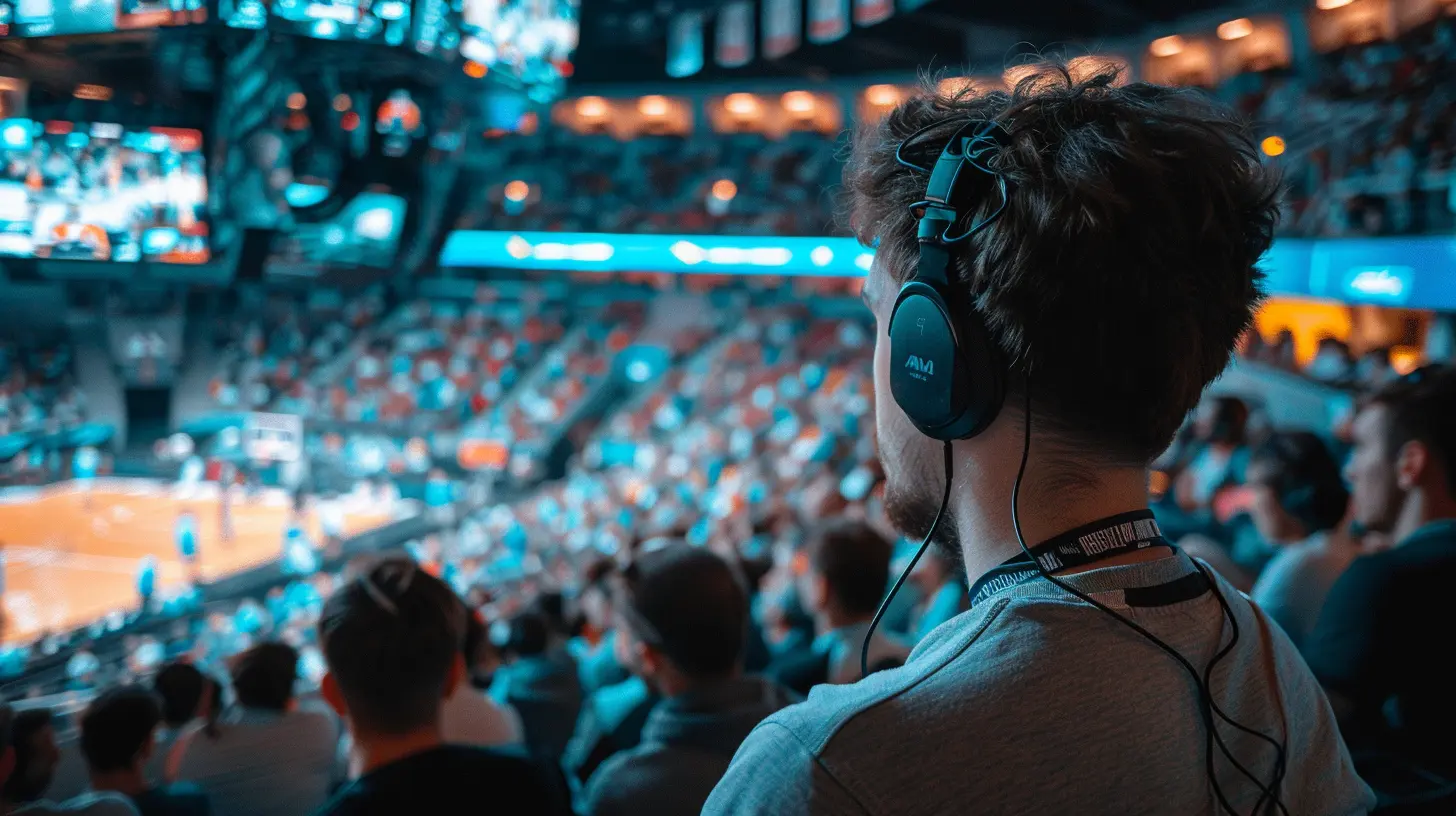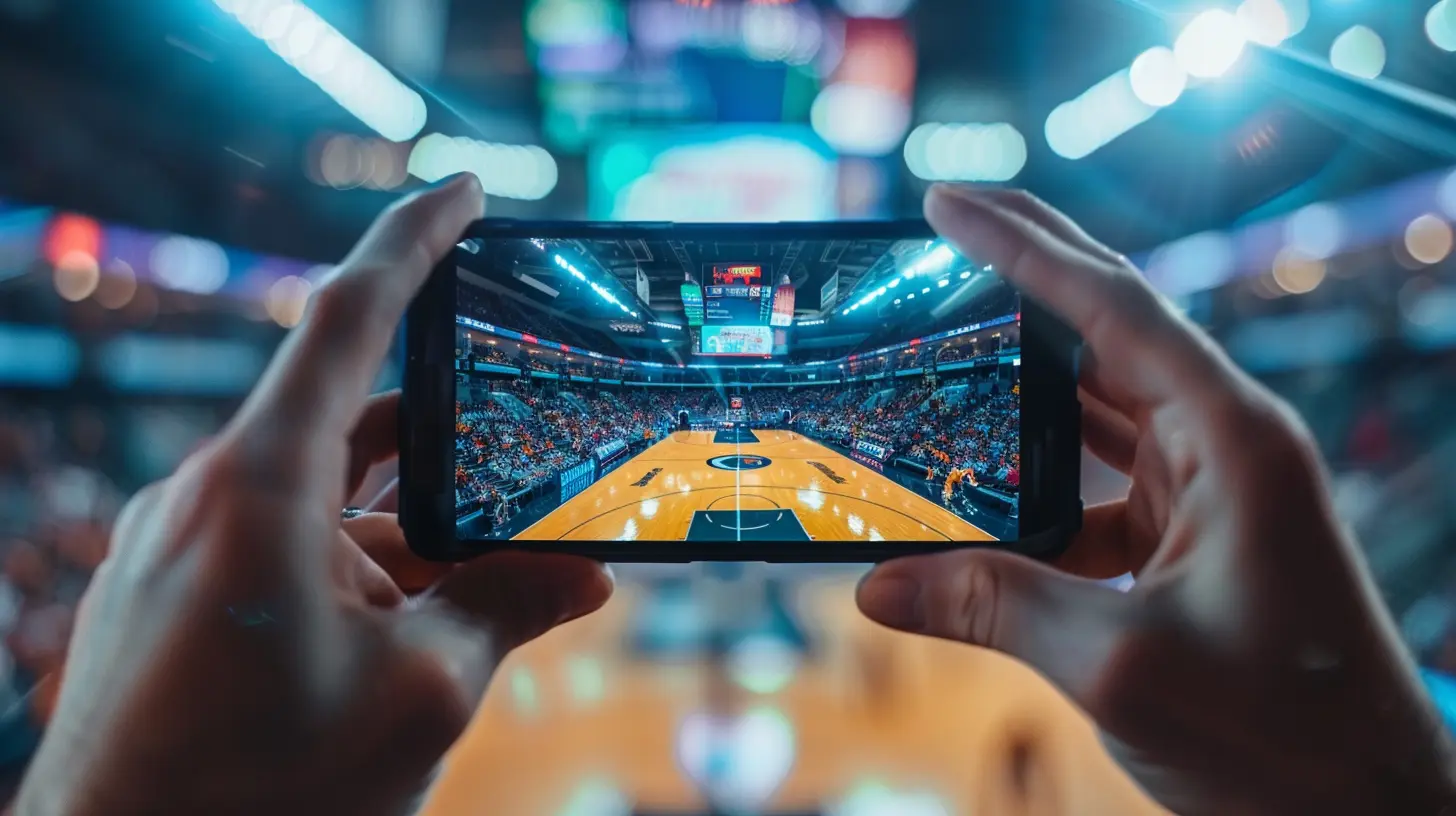Live Sports Streaming: A Guide to Avoiding Buffering
14 August 2025
Let’s be real – there’s nothing more frustrating than watching your favorite team go in for the big play… and then buffering ruins the moment. It’s like your Wi-Fi has a sixth sense for the climax of the game. We've all been there.
If you're someone who loves live sports and can’t stand the dreaded spinning wheel of death, this guide is for you. We're diving into everything you need to know to stop buffering in its tracks and keep your stream smooth from kickoff to the final whistle.
Why Does Buffering Happen During Live Sports?
Before we jump into fixes, let’s quickly break down why buffering happens in the first place. Buffering is basically your device begging the internet for more data to show the next part of the stream. If it doesn’t get it in time? Boom. Pause. Wait. Rage.Common Causes of Buffering:
- Slow internet connection- Too many devices hogging bandwidth
- Poor Wi-Fi signal
- Outdated hardware
- Streaming service overload
- ISP throttling
It’s not always just your fault or your gear – sometimes the issue lies with the streaming provider or even your internet provider playing gatekeeper.
Get the Right Internet Speed (Seriously, This Matters)
If you're trying to stream live sports in HD or 4K, you need a connection that can handle it. Not all Wi-Fi is created equal.How fast should your internet be?
| Stream Quality | Minimum Speed ||----------------|----------------|
| Standard (480p) | 3 Mbps |
| HD (720p–1080p) | 5–10 Mbps |
| 4K (Ultra HD) | 25+ Mbps |
But here's the deal: those are just minimums. If your roommate is gaming, your partner is on Zoom, and the kids are watching YouTube, your 10 Mbps just won’t cut it.
Pro Tip: Aim for at least double the required speed for your preferred streaming quality, especially during peak hours.
Use a Wired Connection (Old School Wins Sometimes)
Wi-Fi is convenient, but it’s also moody. Walls, microwaves, and even your neighbor’s router can mess it up. If you don’t want to gamble with your stream, plug your device into your router with an Ethernet cable.It’s like benching an unreliable rookie for your best player—you just trust it to perform.
Optimize Your Wi-Fi Like a Pro
Okay, maybe Ethernet isn’t your thing. No worries. You can still boost Wi-Fi performance:Quick Fixes for Better Wi-Fi:
1. Place your router in the center of your home. Don’t hide it behind the TV or stuff it under a couch.2. Keep it elevated. Higher placement = better signal.
3. Use 5GHz over 2.4GHz. It’s faster and less congested, great for short-range streaming.
4. Name your network clearly. So your devices don’t accidentally jump onto the neighbor’s slow signal.
5. Kick off unnecessary devices. If your smart fridge is online, maybe it doesn’t need to be during the game.
Close Background Apps and Tabs
You might not realize it, but a bunch of background apps or open browser tabs can steal your bandwidth. If you’ve got a dozen tabs open from three days ago, it might be time for a digital cleanup.Think of it like traffic: if everything’s trying to move down the same street at once, nobody’s getting anywhere fast.
Lower the Stream Quality (If You Have To)
I get it—you want that crisp, high-def visual of every play. But sometimes, streaming in 1080p just isn’t realistic for your connection.Most platforms allow you to manually set the video quality. Drop it down a notch during peak times to avoid buffering. Watching a smooth 720p stream beats a choppy 1080p feed any day.
Choose the Right Streaming Service
Not all platforms are created equal. Some sports streaming services are optimized better than others. Look for ones with:- Reliable servers
- Adaptive bitrate streaming (adjusts quality based on your connection)
- Minimal delay
- Low chance of crashing during peak events (Super Bowl, anyone?)
If a platform constantly buffers, it’s time to switch. You deserve better.
Use Quality Streaming Devices
Your old laptop from 2013 struggling to breathe will buffer, period. Make sure your device can actually handle HD or 4K speeds and has up-to-date software.Top streaming devices that rarely flinch:
- NVIDIA Shield TV- Apple TV 4K
- Roku Ultra
- Amazon Fire TV Stick 4K
- Chromecast with Google TV
A good device is like a solid quarterback—it keeps things running smoothly and makes smart decisions under pressure.
Consider a Streaming VPN (Especially for Sports)
Wait… a VPN? For streaming?Yes. Some ISPs actually throttle (read: slow down) your speed when they detect heavy usage like streaming sports. A VPN masks your activity and sometimes boosts your speed. Plus, it lets you access geo-restricted content if your favorite team’s game is blocked in your country.
But not just any VPN will do. Look for one that’s optimized for streaming with high-speed servers.
Watch at Non-Peak Hours (If You Can)
This one's tricky with live sports, but sometimes you can choose replays or delayed streams. Watching after the crowd dies down means you’re not competing with everyone else for bandwidth.It’s kind of like going to the gym at 10PM—much less crowded and way more enjoyable.
Update Everything Regularly
Outdated software is a breeding ground for bugs and performance issues.Keep these up to date:
- Streaming apps (ESPN, NFL+, DAZN, etc.)- Your device’s operating system
- Your router’s firmware (yes, even that)
If you’ve been hitting “remind me later” for weeks on that update prompt, it’s probably time to stop snoozing those notifications.
Use Local Servers When Possible
Some streaming apps let you choose server locations. Pick one that’s close to your geographical location—shorter distance = faster data travel time.It’s like ordering takeout from a restaurant two blocks away instead of one across town. You'll get your “data delivery” quicker and fresher.
Set Up Quality of Service (QoS) on Your Router
QoS is your router’s way of playing referee. It prioritizes streaming traffic over everything else. So even if your roommate is downloading a 30GB game, your stream gets top billing.Log into your router’s settings, and assign higher priority to your streaming device. Some routers even have presets for gaming or media.
Buffering During Big Games? Consider Downloading or Recording Ahead
This doesn’t help with live play, but some apps let you record games or watch delayed broadcasts. If buffering is just too risky (like during the World Cup Final), this Plan B can be a lifesaver.Call Your ISP – Yes, Really
If you’ve tried everything and your stream still stutters, it might be time to have that awkward convo with your internet service provider. Ask them:- Are you throttling my speed?
- Do you offer faster plans?
- Is there network congestion in my area?
Sometimes just asking gets your account flagged for better performance. Or you’ll realize it’s finally time to upgrade (or switch providers completely).
Final Thoughts
Live sports streaming should feel like you're right in the action—not like you're watching a slideshow of your favorite team. Whether you're a die-hard fan or a casual Sunday viewer, no one should deal with constant buffering.From upgrading your internet game to tweaking your router’s settings, there are tons of ways to get a better experience. Don’t settle for watching spinning wheels instead of spinning touchdowns.
Take control of your stream. Get smooth. Stay in the action.
all images in this post were generated using AI tools
Category:
Live StreamingAuthor:

Nelson Bryant
Discussion
rate this article
1 comments
Rivenheart McGivern
Great insights! This guide is essential for sports fans looking to enhance their live streaming experience. Implementing these tips will definitely help reduce buffering and ensure uninterrupted action. Excited for smoother game days ahead!
August 28, 2025 at 11:00 AM

Nelson Bryant
Thank you! I'm glad you found the guide helpful. Here’s to a smoother streaming experience on game days!


